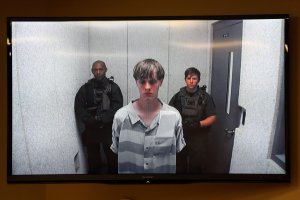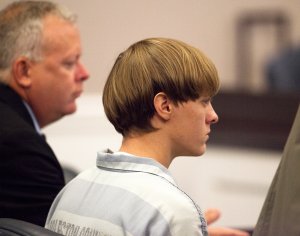Esther Lance was torn over how to punish Dylann Roof, the man found guilty of killing her mother and eight others at a Bible study in Charleston, South Carolina, last year.

“Yes, I want him to see the death penalty,” Lance told CNN’s Nick Valencia after a jury on Thursday convicted Roof on all 33 federal charges against him.
But Lance, 53, quickly changed her mind, saying she and her late 70-year-old mother, once a custodian at Emanuel African Methodist Episcopal Church, wouldn’t want Roof to get that punishment.
“My mom wouldn’t have wanted that,” she said of Ethel Lance, a city employee for more than three decades, who had worked back stage at Gaillard Auditorium.
Next month, the jury will wrestle with whether to sentence Roof to the death penalty. That phase of his trial is expected to start on Tuesday, January 3. Roof has said he wants to represent himself in that part of the case.
If jurors decide on the death penalty, Roof will join a list of infamous killers, such as Timothy J. McVeigh, one of two people convicted in the Oklahoma City bombing. McVeigh, who died by lethal injection in 2001, was one of three federal inmates who have been executed in the United States since the federal death penalty was reinstated in 1988 after a 16-year moratorium.
The last person given a federal death sentence was bomber Dzhokhar Tsarnaev in 2015 after he was convicted for his role in killing four people and wounding others in the 2013 Boston Marathon, according to the Death Penalty Information Center, a Washington-D.C. based non-profit.
In August, Roof’s attorneys had challenged the federal death penalty. They argued that the Federal Death Penalty Act “is unconstitutional, no one can be lawfully sentenced to death or executed under it, no matter what his crimes.”
His lawyers said if federal prosecutors removed the death penalty, Roof would “withdraw this motion and plead guilty as charged to all counts in the indictment.”
Roof’s attorneys said the federal penalty was “unconstitutional punishment” and that such “arbitrary, cruel and unusual punishment” violated both the Fifth and Eighth Amendments.
A week ago, opening statements in Roof’s trial began and witnesses gave emotional accounts of surviving the 70 rounds Roof fired from a Glock.45-caliber pistol on June 17, 2015.
Roof didn’t take the stand in his defense. The self-declared white supremacist has admitted to the killings.
His conviction came about two hours after jurors deliberated.

‘Waited until they were at their most vulnerable’
“He needs to be held accountable for every bullet,” Assistant U.S. Attorney Nathan Williams told the jury, emphasizing what he said was the depth of Roof’s hatred.
“The parishioners could not have seen the hatred in his heart,” Williams said. “He sat and waited until they were at their most vulnerable.”
Family members of the victims sobbed as Williams spoke.
Defense attorney David Bruck said Williams was correct about the events.
“Why, why did Dylann Roof do this?” Bruck said. “What was the explanation?”
Bruck asked the jury to “look beyond the surface” and to ask, “Is there something more to this story?”
Prosecutors presented Roof as a “cold and calculating” killer. Jurors saw a witness whose son was killed sobbing on the stand. They heard an FBI agent read a series of Roof’s racist writings. And they watched a video of Roof laughing after admitting he killed the victims.
‘Kind of lost it a little bit’
The defense did not call any witnesses.
Esther Lance said she was “angry” to be in same room as the man responsible for killing her mother.
Lance said she “kind of lost it a little bit” when she saw pictures of the crime scene for the first time. One photo showed Emanuel’s beloved pastor, the Rev. Clementa Pinckney, 41, with blood streaming from his body. But Lance said the jury needed to see the photos to understand “why he did it.”
Roof had told the FBI he wanted to start a race war.
He wrote in a 2,000-word racist rant that he “chose Charleston because it is most historic city in my state, and at one time had the highest ratio of blacks to Whites in the country.”
Williams, in his closing, said Roof’s “message of hatred was eclipsed by the goodness of those people.”
Shortly after deliberations started, the jury asked to again watch the video in which Roof confessed to two FBI agents. Specifically, the jury wanted to see the portion where Roof was unsure of how many people he had killed.






